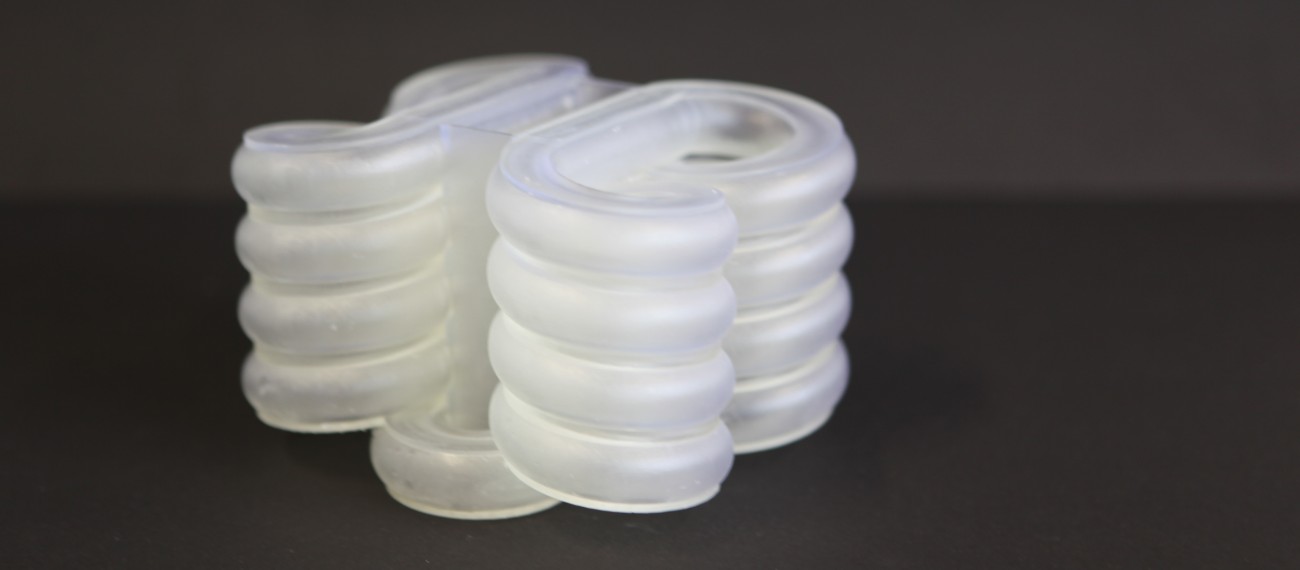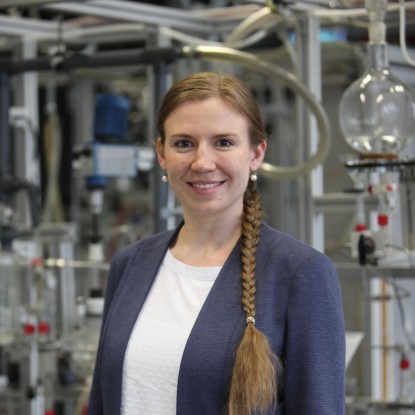Going from batch to continuous processes poses a lot of advantages from the process point of view. The challenge is that continuous processes in tubular reactors in lab scale typically run under laminar flow conditions due to smaller volume streams and fouling – polymer deposition on the reactor wall – readily occurs in polymerization process. Thus, the aim is to use additive manufacturing as a possibility to design geometries not easily available via traditional manufacturing. Computer aided designs (CAD) are drawn, then printed and applied for polymerizations in flow. This allows fast prototyping and flexible design of geometries.
Combining 3D-Printing with Computational Fluid Dynamic (CFD) calculations additionally allows targeted design optimization. Mixing efficiency and residence time distribution can be determined via CFD calculations in a first step to understand and optimize flow behavior in the reactor geometry. Then, the CFD calculations are combined with kinetic modeling to enhance understanding of coupled flow behavior and polymerization kinetics. Optimized geometries are then printed via stereolitography (SLA) in transparent resin to check for mixing and residence time distribution behavior in an experiment. This allows to validate the simulation results and if necessary to go back to the design and optimization step. Finally, an optimized geometry is applied in solution or emulsion polymerization reactions.
[1]https://onlinelibrary.wiley.com/doi/full/10.1002/cite.202200005






